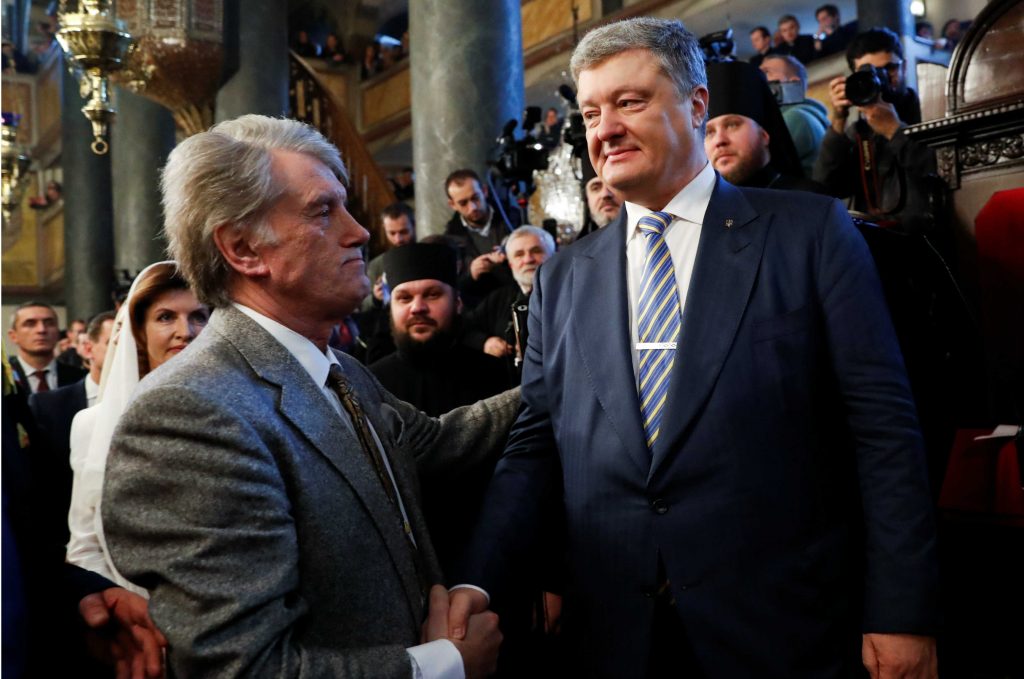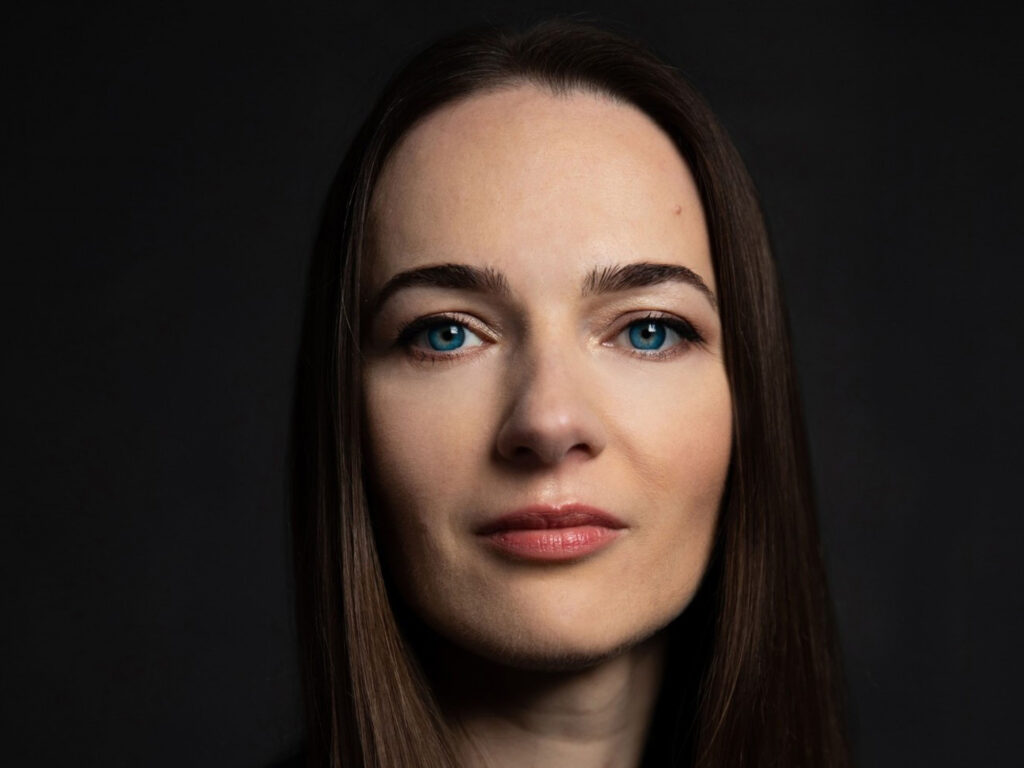Russian President Vladimir Putin will go down in history as having “lost Ukraine” for good. Putin has experienced two “geopolitical tragedies” with the disintegration of the USSR in 1991 and disintegration of the Russian world in 2018.
On April 14, 2018, 268 deputies in the Ukrainian parliament voted to appeal to Constantinople to grant autocephaly, or independence, to the Orthodox church. Less than a year later on January 5, Constantinople Patriarch Bartholomew signed the official document known as the tomos that created a Ukrainian Orthodox Church independent of Russia. Today, on Christmas Eve according to the old Julian calendar, the tomos was transferred to Ukrainian President Petro Poroshenko.
This event has major ramifications for Ukraine’s upcoming elections, the Orthodox world, relations with Russia, and geopolitics.
First, elections. The main beneficiary of the tomos is Poroshenko. He has moved into second place in the polls, which means he is likely to face former Prime Minister Yulia Tymoshenko in the second round of the presidential election in April. Ukrainians named Poroshenko as politician of the year and the creation of an independent Ukrainian Orthodox Church as the most important event of 2018.
Stay updated
As the world watches the Russian invasion of Ukraine unfold, UkraineAlert delivers the best Atlantic Council expert insight and analysis on Ukraine twice a week directly to your inbox.
It would be wrong to dismiss the push to free Ukraine’s church as a pure election ploy. Negotiations for autocephaly began under President Viktor Yushchenko (2005-2010). As Rostyslav Pavlenko, who served as Poroshenko’s deputy head of the presidential administration for humanitarian and societal issues and was the point man on the issue until recently, observed, “This slow but steady implementation is the result of the invisible preparatory work spanning years before April 2018.” Of Ukraine’s five presidents, only pro-Russian Viktor Yanukovych (2010-2014) never supported autocephaly.
Second, the Orthodox world. Before today’s move, the Ukrainian Orthodox Church which came under the Moscow Patriarchate accounted for a third of its total parishes and their loss reduces the size of the Russian Orthodox Church to that of the Romanian Orthodox Church. Within Ukraine, the Russian Orthodox Church will become a minority church with its influence severely curtailed. In the political domain, its main supporters—Party of Regions and Communist Party—belong to pre-2014 Ukrainian history while its current allies, the Opposition Bloc, are bitterly divided and weak.
Third, relations with Russia. These are continuing to deteriorate as seen in Russia’s naval piracy in the Black and Azov Seas. But, the tomos cannot be halted by the threat of a Russian invasion of Ukraine.
Autocephaly adds to the deterioration of Russian soft power in other areas. On December 20, 240 parliamentary deputies voted to require the Ukrainian Orthodox Church (the official name of the Russian Orthodox Church in Ukraine) to re-register as a Ukrainian branch of the Russian Orthodox Church. As most of their parishes are in western and central Ukraine, a large number of patriotic Ukrainians will desert it because it will be henceforth openly linked to Russia. Two-thirds of Ukrainians view Russia as an “aggressor country.”
Fourth, geopolitics. The tomos and Ukraine’s departure from the Russian world reconfigure Eastern Europe’s geopolitical map, which was created in the seventeenth and eighteenth centuries when Muscovy transformed into the Russian Empire over three stages.
In 1654, Ukraine and Muscovy signed the Treaty of Pereyaslav, which has always been viewed by Russian and Soviet leaders and historians as a “reunion” and by Ukrainians as a tactical military alliance against Poland. Crimea was transferred to Soviet Ukraine during the 1954 Soviet commemoration of the 300th anniversary of the Pereyaslav Treaty. In annexing Crimea, Russia effectively ripped up the Treaty of Pereyaslav.
In 1686, Muscovy removed the Ukrainian Orthodox Church from under Constantinople’s canonical jurisdiction, placing it within the Russian Orthodox Church for 332 years. In the autumn of 2018, Constantinople declared this to have been uncanonical and returned Ukraine under its jurisdiction.
Eurasia Center events

In 1709, the Swedish-Ukrainian alliance was defeated by Muscovy leading to its transformation into the Russian Empire in 1721. With opinion polls showing two-thirds to three-quarters of Ukrainians viewing Russian leaders, Russia’s political system, and Russian policies toward Ukraine in highly negative terms, there is no likelihood of Ukraine moving away from its European path. Ukraine, the largest country in the EU’s Eastern Partnership, sees itself as irreversibly part of Europe. Ukraine’s new Orthodox Church will be pro-European and will not subscribe to the Russian Orthodox Church’s anti-Western xenophobia.
In 1991, Ukraine declared independence from the USSR and in 2018 from the Russian world. Ukraine has chosen Europe over the Russian world. New Europe, lying between NATO and the EU’s eastern frontier and Russia, has been geopolitically reconfigured to what the region resembled prior to Muscovy’s expansion westwards in the seventeenth and eighteenth centuries.
Ukraine’s independence from Russia is Kyiv’s ultimate answer to Putin’s unprovoked imperialism and military aggression. If Mikhail Gorbachev lost the USSR, Putin will go down in history as having “lost Ukraine” for good. As Patriarch Barthomelew put it, a new page in Ukraine’s history has been opened, and it will forever be part of Europe.
Taras Kuzio is a non-resident fellow at the Foreign Policy Institute at Johns Hopkins-SAIS and professor at the National University of Kyiv Mohyla Academy. He is also author of “Putin’s War Against Ukraine” and co-author of “The Sources of Russia’s Great Power Politics: Ukraine and the Challenge to the European Order.”
Further reading
The views expressed in UkraineAlert are solely those of the authors and do not necessarily reflect the views of the Atlantic Council, its staff, or its supporters.

The Eurasia Center’s mission is to enhance transatlantic cooperation in promoting stability, democratic values and prosperity in Eurasia, from Eastern Europe and Turkey in the West to the Caucasus, Russia and Central Asia in the East.
Follow us on social media
and support our work
Image: Ukrainian President Petro Poroshenko shakes hands with Former Ukrainian President Viktor Yushchenko after the Epiphany mass at the Patriarchal Cathedral of St. George in Istanbul, Turkey January 6, 2019. REUTERS/Murad Sezer


